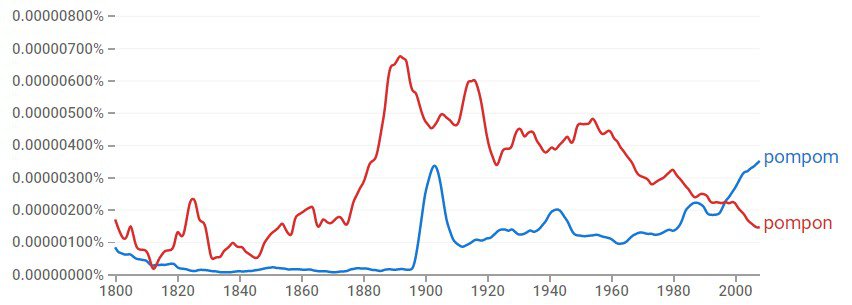The term for a decorative tuft of material such as wool or ribbon was originally pompon, which came to English from French in the 19th century, but the misheard form pompom has gradually gained ground. Today, the two are used about equally in English. Two-word spellings such as pom pom and pom pon have never been standard, though they appear in informal contexts, and hyphenated forms such as pom-pom are likewise nonstandard. There’s no reason for the word to have a hyphen.
Examples
Although there’s no logical basis for the hyphenated pom-pom, it appears with surprising frequency—for example:
She said the Steelerettes would perform acrobatics, shake their pom-poms to pop songs of the day and lead cheers. [Toronto Star]
Few Brit-pop bands could soundtrack an NFL apparel ad, but this Brighton, England crew’s pom-pom waving spirit fit one fine. [Rolling Stone]
Other writers correctly refrain from using the hyphen—for example:
He’s a shy kid in a wheelchair; she’s a cheerleader with an IQ lower than a pompom. [Boston Herald]
Laremont students will be joined by the basketball team, pep band, cheerleaders, pompom squad and drill team for the 10 a.m. event. [Chicago Sun-Times]
A minority of publications keep the French spelling, which is etymologically correct but fading from English:
There are double coneflowers, pompon-blooming coneflowers, coneflowers with twisted petals, quilled petals, dwarf bloomers and extra large, giant varieties. [Appleton Post Crescent]
Esprit will also perform at Epcot and the Disney Studios in an exciting two-hour show featuring Esprit and 9 other pompon squads from Wisconsin and Michigan. [Wauwatosa Now]
Ngram
This ngram graphs the use of pompom and pompon in English-language books published from 1800 to 2008. The current trend favors pompom.


Comments are closed.